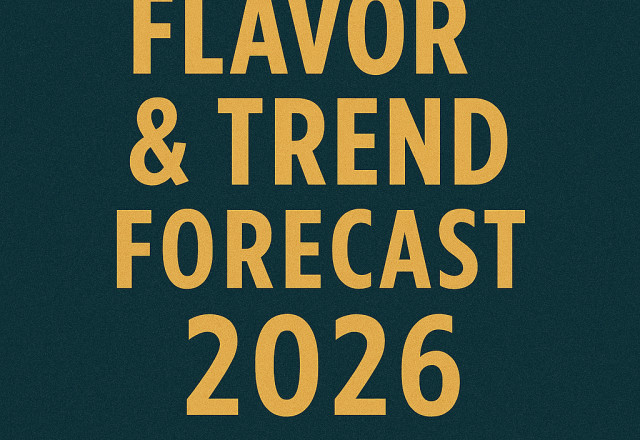Top 2026 Flavor & Trend Predictions
PALM HARBOR, FL / ACCESS Newswire / November 17, 2025 / John Koch, Founder of Koch Associates, has unveiled his annual predictions for five emerging trends set to influence food and beverage menus in 2025 and beyond. With over 25 years of experience in tracking and producing flavor and trend forecasts, Koch offers invaluable insights into the trends that will shape restaurant operations in the coming year.
Announcing
1. Sweet, Spicy & Sour (The Next Swicy) Sweet and spicy has been a reliable driver, but in 2026 it's evolving into something more layered: sweet, spicy, and sour. That third dimension-vinegar, tamarind, citrus, sumac-is what makes these builds pop. Think mango‑chili glaze with rice vinegar, chipotle chocolate with lime, or tamarind barbecue on pork. It's craveable, emotionally charged, and easy to execute across sauces, snacks, and beverage platforms. Operators can lean on this trifecta to refresh familiar items without reinventing the wheel.
2. Sweet Meets Savory Miso honey, black pepper and blackberry jam, maple‑soy, fish sauce caramel-these combos are showing up everywhere, and they make sense. They're familiar, operationally simple, and they deliver depth without complexity. Whether it's a glaze for chicken, a dessert drizzle, or a beverage syrup, these blends offer comfort with a little edge. The beauty is that they don't require a new SKU or a complicated build; they're plug‑and‑play flavor systems that deliver big impact. No need to name the trend-just use it.
3. Global, But Specific Global fusion is fading, replaced by a demand for specificity and authenticity. Consumers want flavor with a story-something real, not generic. Instead of "Asian purple yam," say Filipino ube shake. Instead of gochujang wings, try West African suya wings. Rather than a "Middle Eastern‑style glaze," go with Persian barberry glaze. There's a growing desire to understand the name, the region, and the traditional use of exotic ingredients-and that's what makes them feel credible, not borrowed. For operators, specificity builds trust and differentiation.
4. Texture as Flavor Crunch, chew, and contrast are driving flavor perception as much as taste. Crispy chili oil, puffed grains, freeze‑dried inclusions-these are showing up in everything from dips to desserts. Texture lets you refresh a core item without changing the base, which is a smart way to add interest without blowing up the build. For manufacturers, inclusions and textural layers create premium cues at low cost. For restaurant chains, it's a way to add excitement to familiar items while keeping operations tight. Texture is no longer garnish-it's a flavor driver.
5. Fiber Forward (With Boundaries) Fiber is overtaking protein as the functional claim to watch, driven by gut health, satiety, and digestive wellness. Expect beverage developers-juice, smoothies, even coffee-to push fiber fortification hard. The opportunity is real, but the risk is turning every drink into a "functional potion." Fiber doesn't belong everywhere, and operators should avoid the trap of bolting it onto indulgent formats where it feels forced. The smart play is to use fiber where it makes sense-baked goods, snacks, sauces, and comfort foods with a wellness edge. Done right, fiber delivers both indulgence and relevance. Done wrong, it's just another act in the absurdist theater.
Contact Information
John Koch
Founder, Koch Associates
johnkochassociates@outlook.com
7275100540
SOURCE: Koch Associates
SOURCE: Koch Associates
View the original press release on ACCESS Newswire
